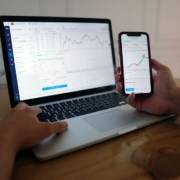Demystifying Financial Markets through Simulations
Financial markets can be a complex terrain to navigate, especially for those new to the field. The intricate dance of supply and demand, market trends, and economic indicators can be daunting. This is where financial market simulations come into play. Simulations offer a hands-on way to understand the nuances of financial markets, serving as a powerful tool to demystify these complex systems. They provide a safe environment for experimentation and learning, replicating real-world scenarios without the real-world risks.
The Basics of Simulations
Simulations are computer-based models that mimic real-world situations. In the context of financial markets, these simulations recreate market dynamics, allowing users to interact with a virtual financial market. This interaction involves buying and selling financial instruments, interpreting market signals, making investment decisions, and managing risk. These simulations are created based on historical market data or hypothetical scenarios, thereby providing a wide range of market conditions for users to explore and learn from.
Replicating Real-World Scenarios
One of the primary benefits of financial market simulations is their ability to replicate real-world scenarios. They recreate market situations, from bull markets to bear markets, from stable conditions to volatile ones, and everything in between. Simulations can also reflect global markets, incorporating various traded instruments and currencies, which provides a geo-centric viewpoint that is crucial in today’s interconnected financial world.
Some simulations even replicate specific historical events, such as the 1998 LTCM Collapse or the 2007 Financial Collapse, allowing users to experience these landmark moments in financial history firsthand8. This historical replication offers a unique learning experience, enabling users to understand how these events unfolded and the impact they had on the global financial markets.
Simplifying Complex Financial Concepts
Another significant advantage of financial market simulations is their ability to simplify complex financial concepts. Concepts like portfolio management, market volatility, risk management, and various trading strategies can be difficult to grasp through theory alone. Simulations provide a practical, hands-on approach to understanding these concepts, transforming abstract theories into concrete experiences.
Through simulations, users can experiment with different strategies, see the immediate effects of their decisions, and understand the potential consequences of their actions in a real market scenario. This experiential learning process helps build knowledge and skills quickly, enhancing understanding and retention15.
Case Studies: Popular Financial Market Simulations
There are several popular financial market simulations available today, each with their own unique features and focuses. CapitalWave, for instance, offers a range of simulation platforms tailored to different aspects of the financial markets. The Capital Market Simulator (CMS), for example, focuses on equity and commodity instruments, while the Forex Trading Simulator (FTS) allows for trading of any 12 pairs of currencies with any desired base currency.
Other simulations offered by CaptialWave include the Portfolio Management Simulator (PMS), which focuses on market conditions from a US or EU-centric perspective, and the Fixed Income Trading Simulator (FITS), which provides a focus on bear and bull markets from a US, UK, or EU centric perspective.
These simulations have played a significant role in helping users, especially students and young professionals, gain a more nuanced understanding of the market. By using these tools, they can experiment with different market conditions, strategies, and risk levels, gaining valuable insights that will serve them well in their future careers.
Simulations offer a powerful means of demystifying financial markets. They provide a hands-on, interactive way to understand complex financial concepts, bringing the abstract world of finance to life. As we continue to innovate in financial education, simulations will undoubtedly play a pivotal role in shaping a more accessible and understandable financial future.











